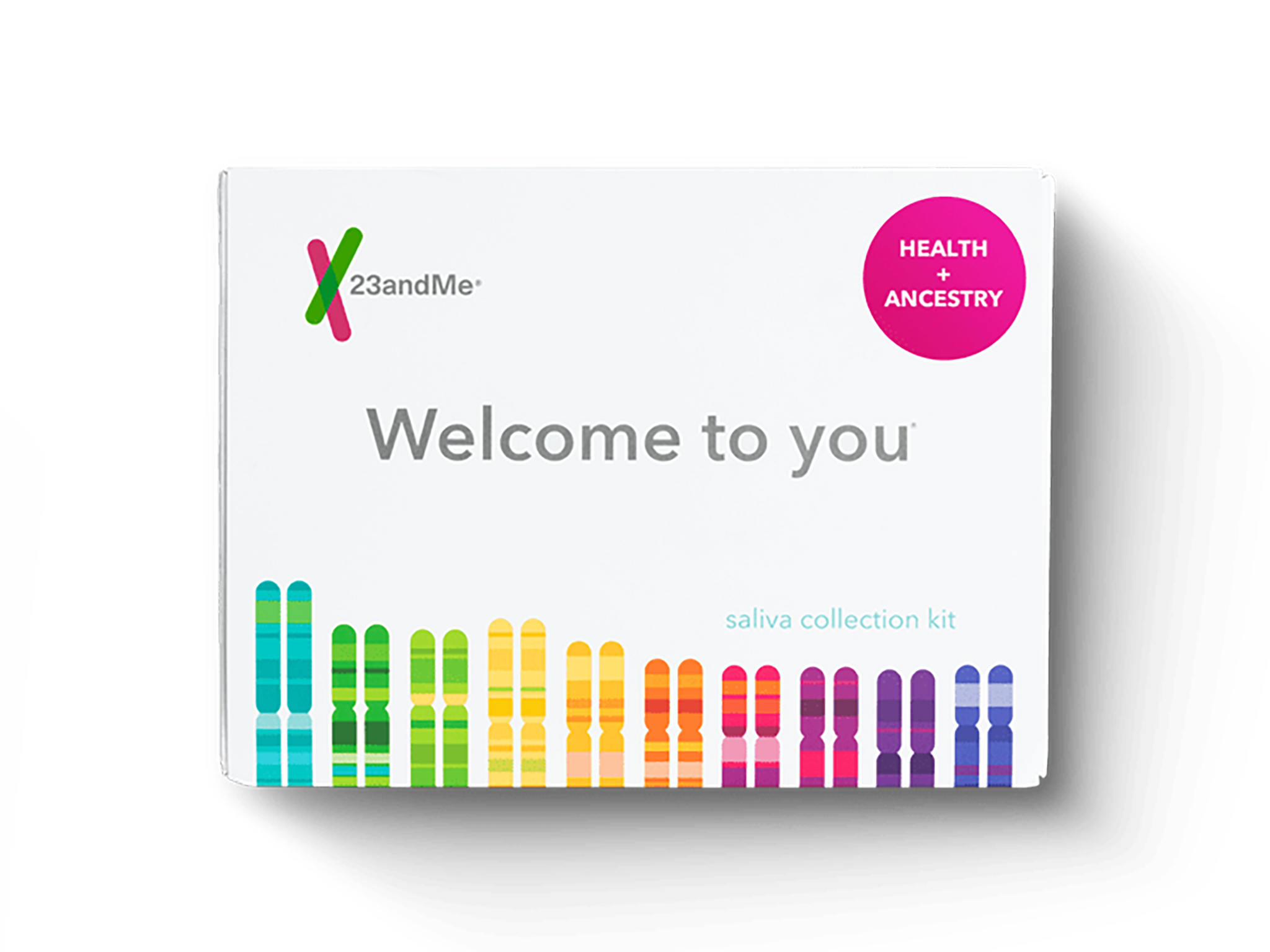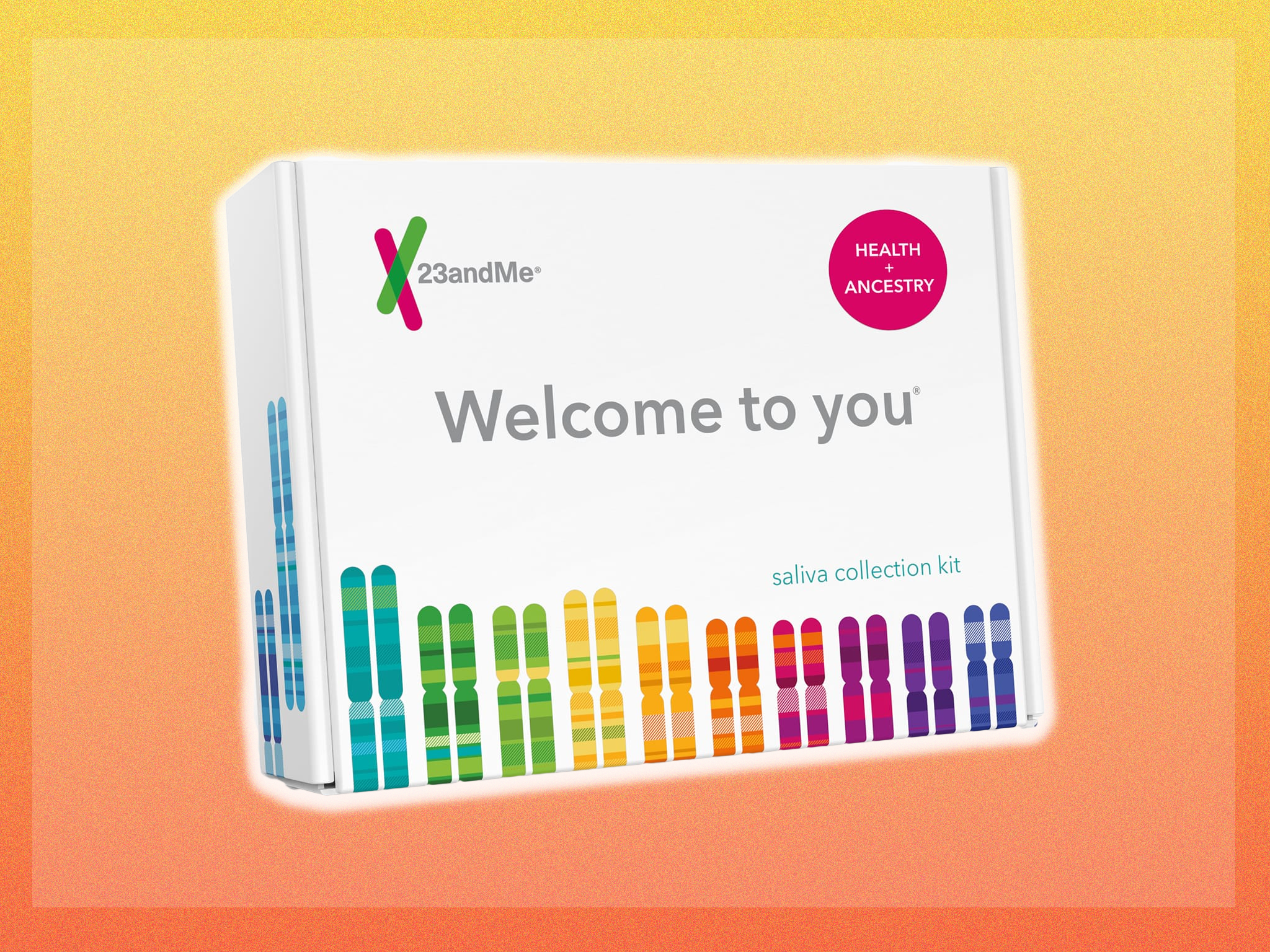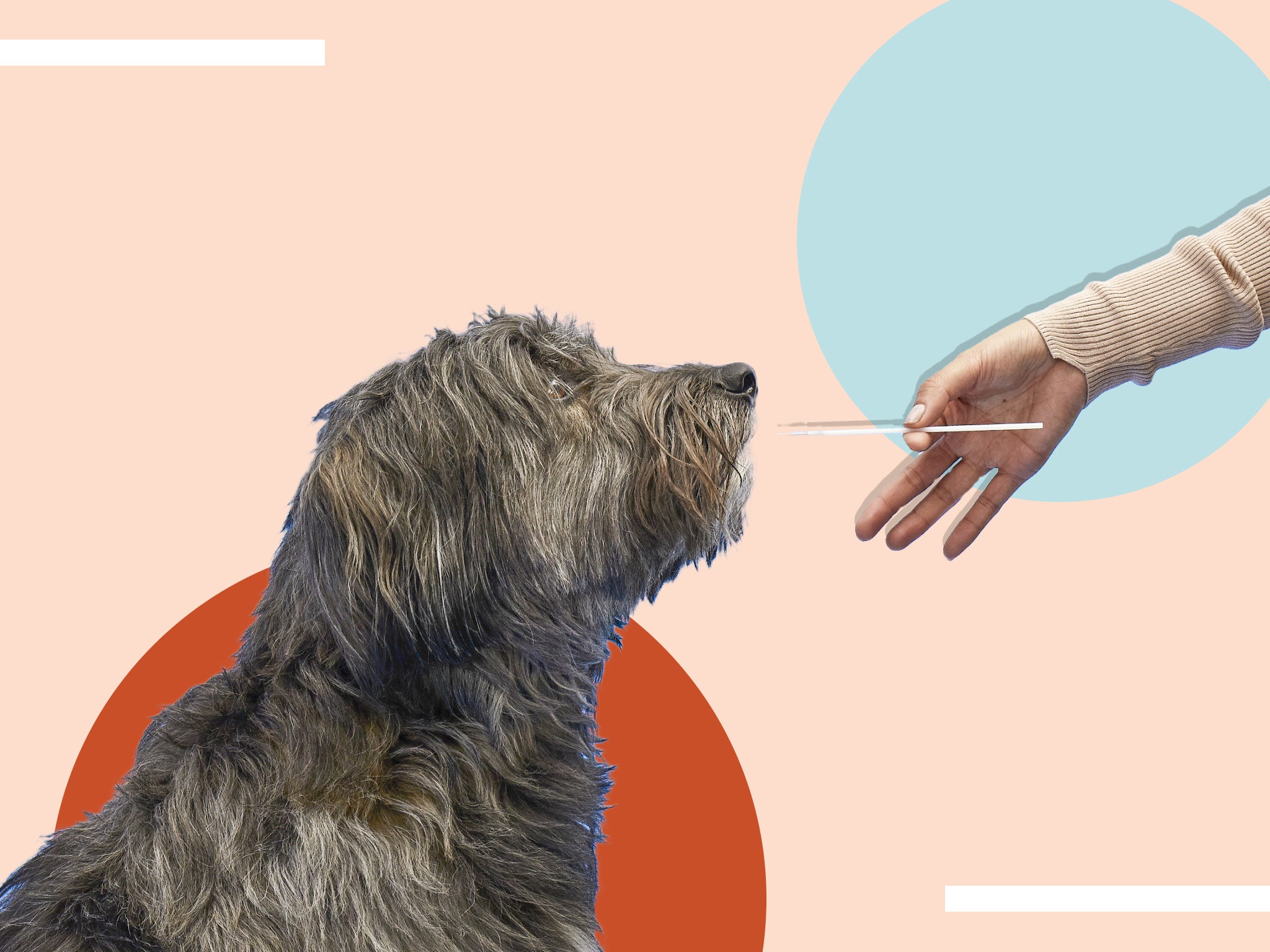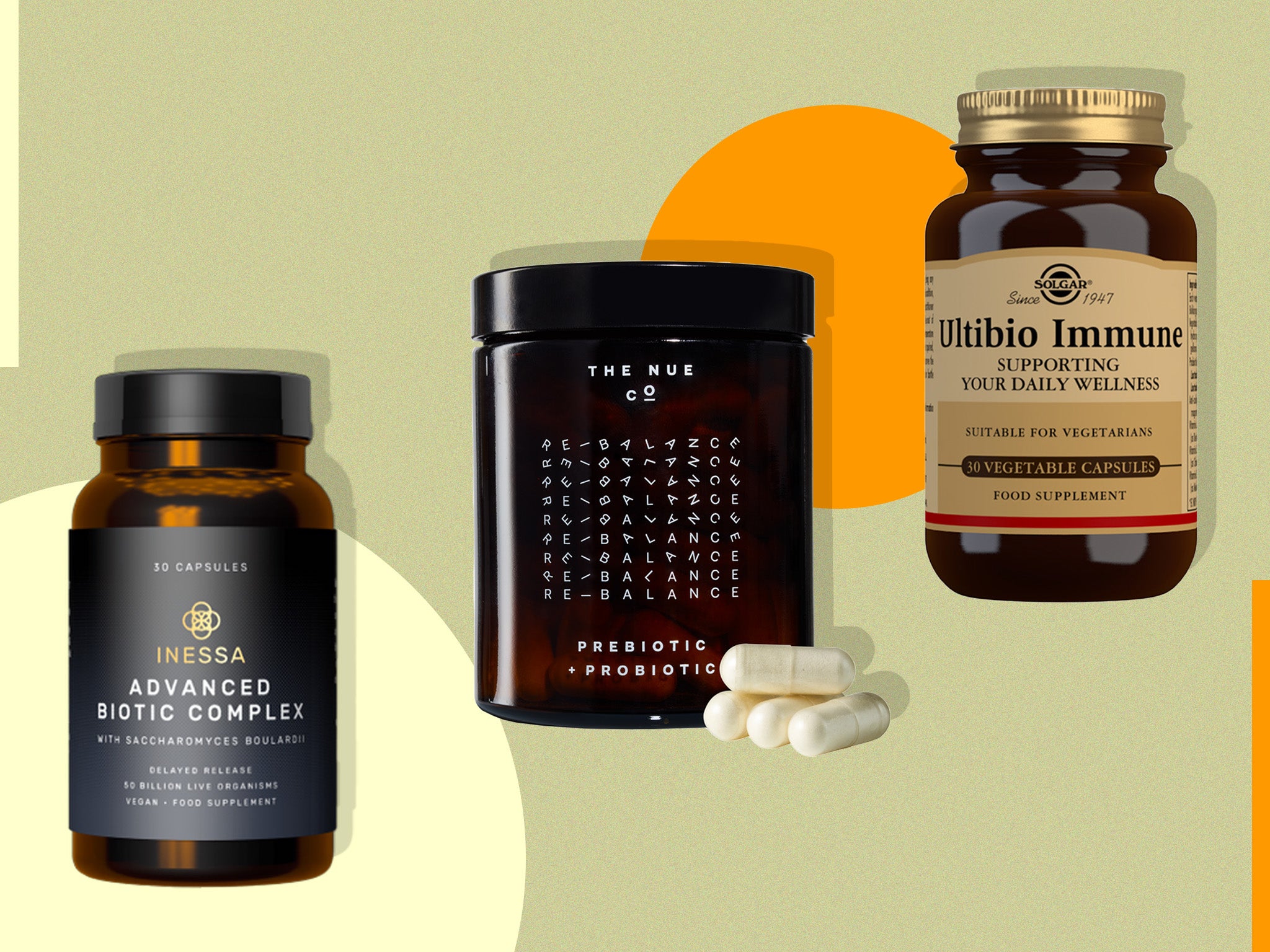23andMe health + ancestry service DNA kit

- Includes: More than 150 reports, including 10+ health reports, 5+ wellness reports, 40+ reports on carrier status
- Wait time for results: Generally three to four weeks
What is 23andMe?
The first thing you need to know about 23andMe is this is a brand that is “all about real science, real data and genetic insights”, with the hope the results help make it easier for us, the consumers, to take action on our health. It offers three different testing services: a basic ancestry package (£79, 23andme.com), an essential ancestry and health package (which is the one I tested), and a membership (£169, 23andme.com), which grants you access to new premium reports and features throughout the year.
How does it work?
Once you’ve decided which service you’d like to buy, the process couldn’t be simpler. Your kit will be sent to you by post and arrives packed in a very neat little box – which, with its bright colours, looks very appealing and inviting.
Inside, you’ll find a small amount of paperwork that takes you through how to register your kit, provide your sample (read: spit in a tube) and what happens next. You won’t find any confusing medical jargon here, thankfully, and the whole process is pretty straightforward. In fact, the only hard and fast rules are not to eat or drink anything 30 minutes prior to providing your sample, which was easy enough to do. What I struggled with, however, was producing enough saliva to fill the tube with the required amount, but I got there in the end.
Read our full round-up of the best ancestry DNA kits
Once you close the lid, seal your tube, and register the barcode (so your DNA doesn’t go awry), you need only to pop it back in the delivery box (return postage has already been paid for) and into the post. Then comes the hard part: waiting.
The results
On average, 23andMe takes about four weeks to send you your reports – I had to wait slightly longer, but only a week or two – and you’ll be notified via email when the information is ready to read. What I liked about this was that there was no unnecessary paperwork, it was all digital and easy to access when I was ready. Plus, if you download the 23andMe app, you can track your kit’s status there, and access your reports too.
I’ll admit, I was somewhat sceptical of just how much detail this kit would be able to give me. But I was happy to be proven wrong, as the results were impressively in-depth as well as being easy to navigate (there were bits of information I was particularly keen to know above others, but more on that in a moment) and read.
Firstly, let me share with you a bit about my ancestry. I’m 100 per cent Northwestern European. While, the fact that I am 79.6 per cent British and Irish didn’t come as a shock to me, I did learn that 17.4 per cent of my ancestral breakdown is French and German. This means that I most likely had a first, second or third-great-grandparent who was born in this region of Europe between 1850 and 1910. This may not have been the shocking ancestral revelation I’d been hoping for but it was definitely interesting to learn.
Read more: We tested Wisdom’s dog DNA test
For those of you good at maths, you’ll have worked out that those results leave about 3 per cent unaccounted for. Well, 2.9 per cent of my remaining DNA has been dubbed “broadly Northwestern European”, though specific regions couldn’t be identified, while the remaining 0.1 per cent couldn’t be assigned.
Things got a whole lot more interesting as I kept reading, though, as I learned I have more Neanderthal DNA than 40 per cent of other customers. Yes, Neanderthal, the prehistoric humans that disappeared some 40,000 years ago. What this means is that, as a result of these Neanderthal variants in my DNA, I’m less likely to have a fear of heights – this is true, though was debatable when I did a skydive from 10,000ft – am more likely to be a better sprinter than a distance runner (give me a 100m sprint over a marathon any day!), and also less likely to prefer salty over sweet foods.
It’s not foolproof, of course (I’m definitely a salted popcorn kind of girl), but, in fairness to 23andMe, it does say it does not explore how other factors may be involved – such as your many other DNA variants, your environment or your lifestyle. While I was excited to learn about caveman heritage, the report went on to explain most “European, Asian, and indigenous American populations today have between 1-2 per cent Neanderthal DNA”, so I was humbled instantly. Still, it’s a fun fact to know about myself.
Read more: How to choose the best vitamin supplements for you
Arguably the most important data was yet to come, though – I’d been looking forward to and dreading the health analysis in equal measure.
Before giving you your results, 23andMe takes you through responsible tutorials and asks your permission before sharing the risk factors for certain conditions. This is a move I really appreciated, as it meant I could opt out if any information would likely be upsetting. It also stresses that, while the DNA test may be able to tell you if you are at risk, this is by no means a diagnosis or a certainty that you will get said condition in your lifetime, merely your predisposition to it.
For me, I chose to opt into everything – that morbid curiosity really got the better of me – and I learned a lot about my health in the process. While I discovered I have a slightly increased risk of celiac disease, type 2 diabetes and late-onset Alzheimer’s (the latter was not a shock, as my late-grandmother had dementia), I’m pleased to say I tested negative for a number of other conditions.
To my relief, I learned I do not have any of the variants tested for the BRCA1 or BRCA2 genes (these are associated with an increased risk of developing certain cancers, including breast cancer and ovarian cancer). Nor were the variants for Parkinson’s detected and I was also ruled out as a carrier of other conditions such as cystic fibrosis. All in all, it’s all very positive, however, it did get me thinking…
Knowing I have an increased risk of some conditions, I have since started to make changes. I’m trying all the usual adages – eating better, moving more – but I’ve also downloaded an app to do daily brain training to help with memory. And though my love of bread remains strong, I am paying closer attention to what my body does after consuming gluten – mainly so that, should any symptoms occur or worsen, I can speak to my GP about it. Basically, what I’m saying is, the results have made me more vigilant.
Read more: The best vitamin D supplements
All of this only scratches the surface, however – 23andMe also gives you a long list of wellness facts, which covers everything from your caffeine consumption to sleep movement (apparently, I wriggle around more than average) and muscle composition – according to my results, my muscle is common in elite power athletes but I guess I must have missed the memo.
It even breaks down your traits from eye colour and hair thickness to your ice-cream flavour preference and wake-up time, which was both hilarious and slightly scary (are they watching me?!). While some of the results aren’t completely accurate – for example, it said I was likely born with little hair, but family photos beg to differ – on the whole, they’re pretty good.
It’s definitely been interesting learning about myself in such detail and there’s so much more I have to read. While the health reports are by no means a diagnosis, I do feel much better knowing where I stand now – especially as I hope to have a long time to right any wrongs.
All in all, it’s been well worth my time and has even got my parents considering doing the same test. If they do, we can connect our profiles and 23andMe will be able to delve even further, so who knows what else I might uncover.











